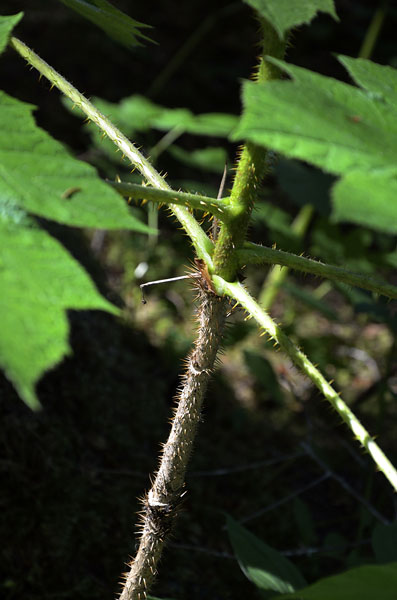Anyone who has been following the Blog for a while knows that I adore bears, so we headed to Pack Creek to visit with the wonderful rangers and to hang out with some of Admiralty Island’s brown bears.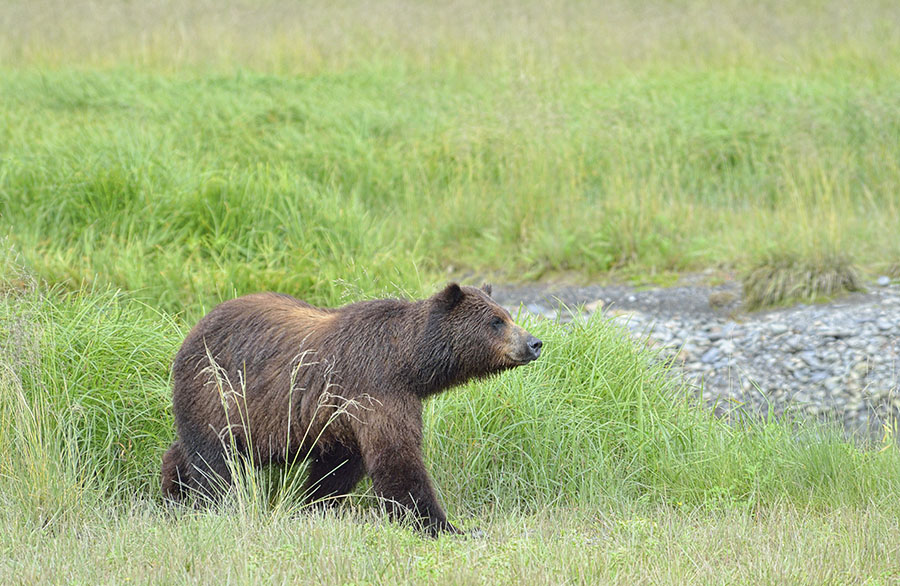
Run by the Forest Service and Alaska Fish and Game, Pack Creek limits visitors to no more than 24 people per day during high season (when the salmon are running). Most people arrive by float plane with a guide from Juneau, and for those of us arriving by boat, they have a “clothes line” that we can tie our skiffs to in order to keep the boats in deep water – to manage the big tidal changes and to keep nosy bears from shredding our boats. One day we tied up to the secondary “clothes line” and apparently we didn’t run the skiff far enough out. So much for going back to the boat for our lunch! By dinnertime it was afloat again, and one of our ranger friends made sure to keep any bears away.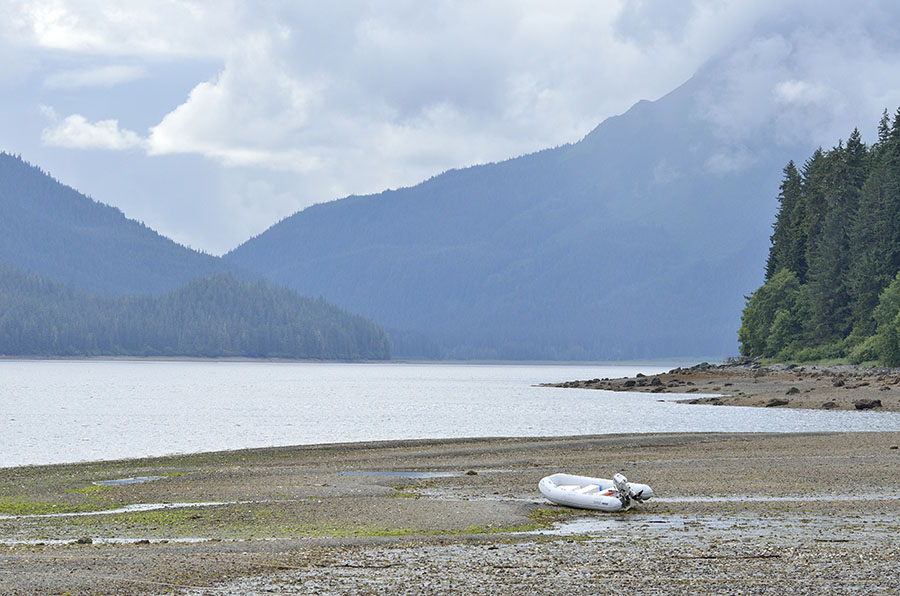 The salmon are late this season and the unusually dry weather isn’t helping either, so the bears were clamming and eating grass. A few fish have made it up the stream, but most of the time the bear’s chase was half-hearted.
The salmon are late this season and the unusually dry weather isn’t helping either, so the bears were clamming and eating grass. A few fish have made it up the stream, but most of the time the bear’s chase was half-hearted.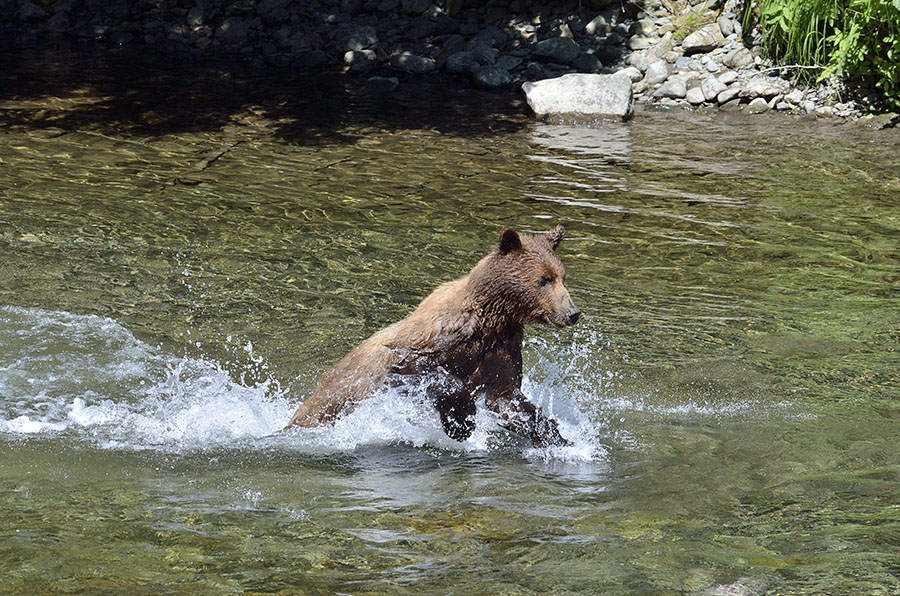 This bear would stand up to get a better view of the fish, and sometimes walk around until she spotted something worthy of pursuit.
This bear would stand up to get a better view of the fish, and sometimes walk around until she spotted something worthy of pursuit.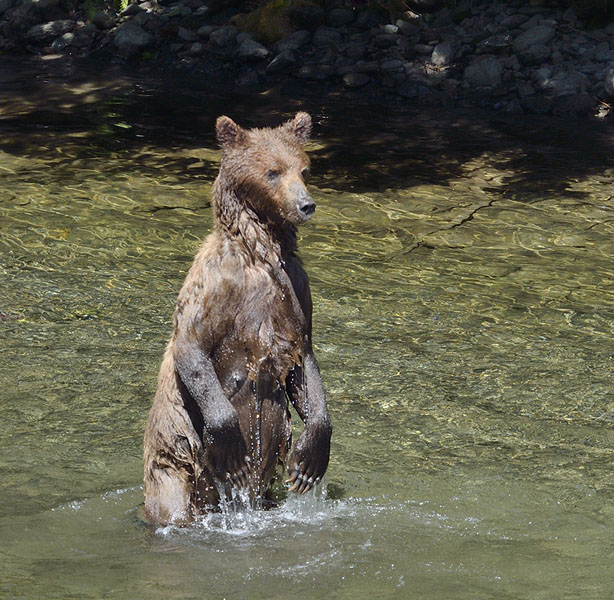 This bear had a more relaxed approach to fishing, sitting and waiting for a big one to come along.
This bear had a more relaxed approach to fishing, sitting and waiting for a big one to come along.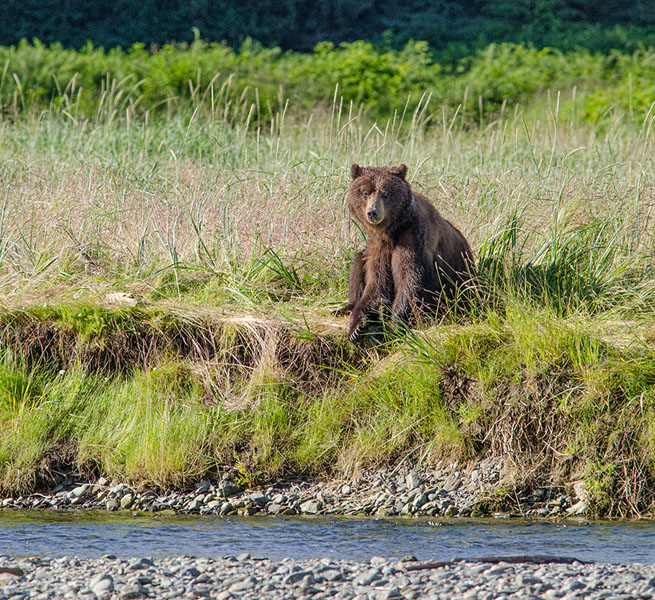 While visiting a different creek in the area this sow and two cubs started heading our way…
While visiting a different creek in the area this sow and two cubs started heading our way…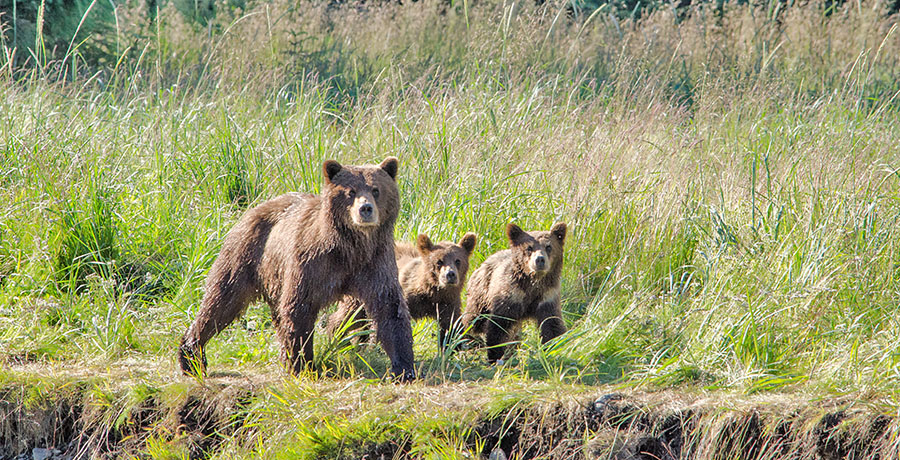 …until we firmly told them to go in a different direction. They thought about that…
…until we firmly told them to go in a different direction. They thought about that…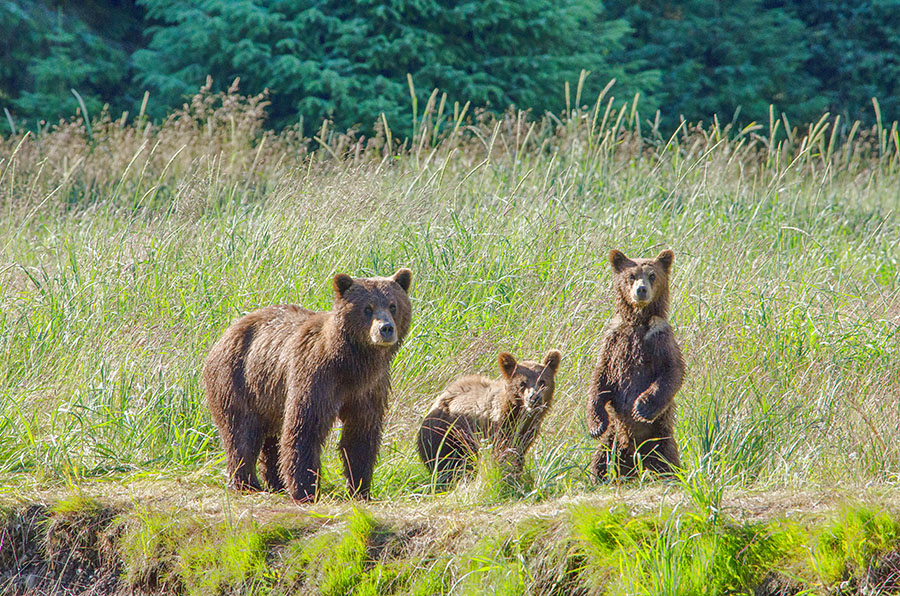 …and all three of them wanted to get a much better look at us before they finally broke off their approach.
…and all three of them wanted to get a much better look at us before they finally broke off their approach.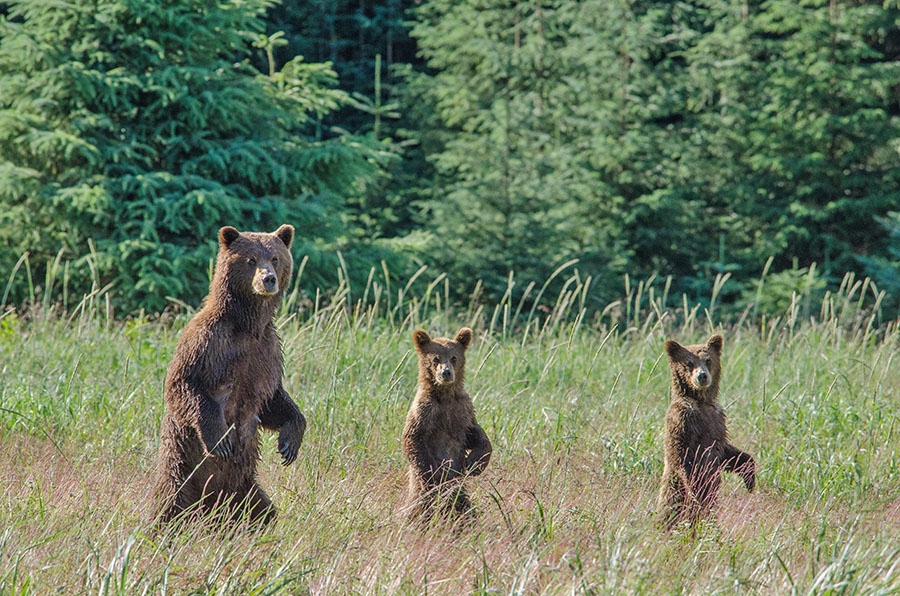 Back at Pack Creek we enjoyed watching a sub-adult pair of siblings: Java (a girl)
Back at Pack Creek we enjoyed watching a sub-adult pair of siblings: Java (a girl)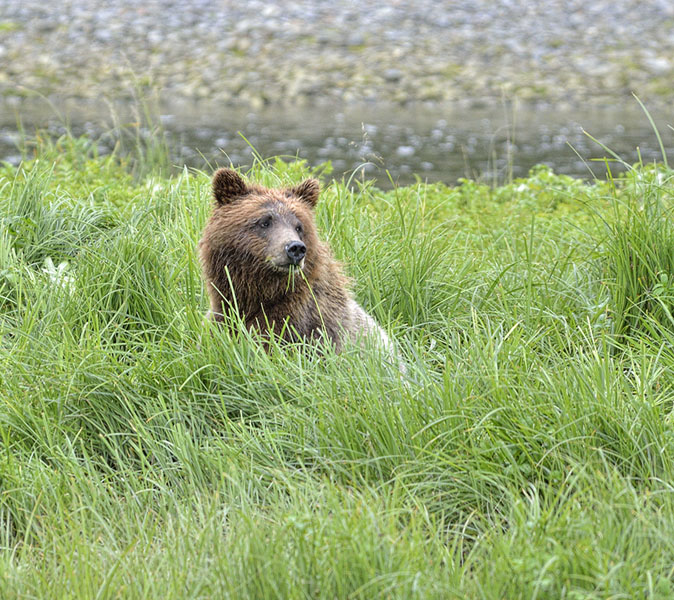 …and Joe, a boy and a serious fluff-ball!
…and Joe, a boy and a serious fluff-ball!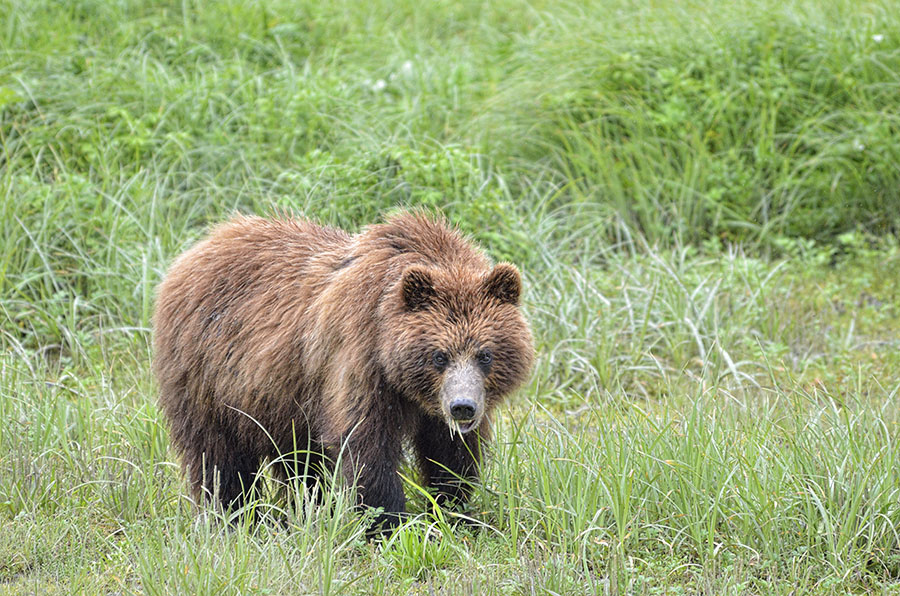 These bears are about two and a half years old, recently sent out on their own by their mother. They tended to stick pretty close together a lot of the time as they’re figuring out how to manage in the big wide world.
These bears are about two and a half years old, recently sent out on their own by their mother. They tended to stick pretty close together a lot of the time as they’re figuring out how to manage in the big wide world.
The weather has been sunny, warm and dry – enough so that even the bald eagles jumped into the water to cool off. We saw two of them do it, and friends said they’ve seen the same thing for the first time ever. It’s a hoot to see these majestic birds splashing around like a little bird in a bird bath!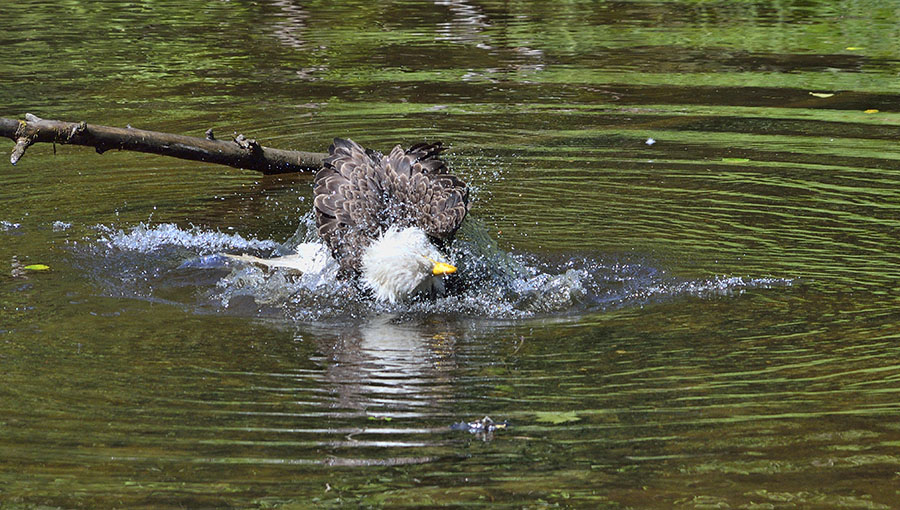 We were surprised that more bears didn’t cool off in the water, especially wearing those beautiful fur coats, though a few did. This one really enjoyed herself, splashing her face and playing in the water.
We were surprised that more bears didn’t cool off in the water, especially wearing those beautiful fur coats, though a few did. This one really enjoyed herself, splashing her face and playing in the water. 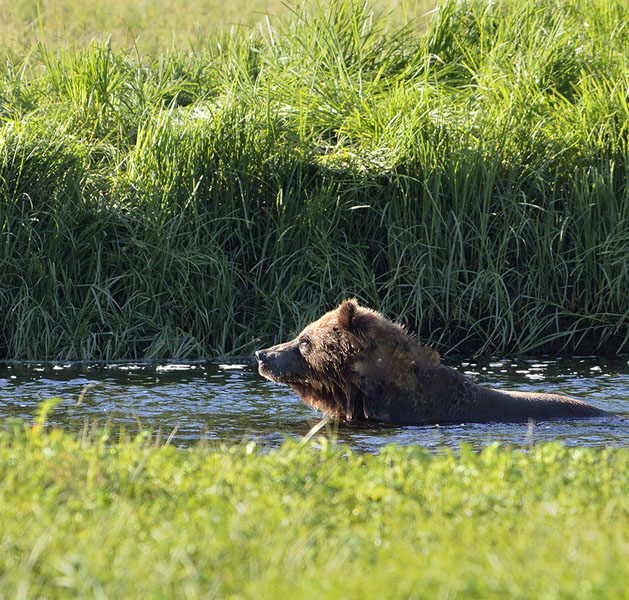 Rain or shine, the experience at Pack Creek is always exciting and magical, made even better by the rangers who generously share their deep knowledge, experience, and love of the bears.
Rain or shine, the experience at Pack Creek is always exciting and magical, made even better by the rangers who generously share their deep knowledge, experience, and love of the bears.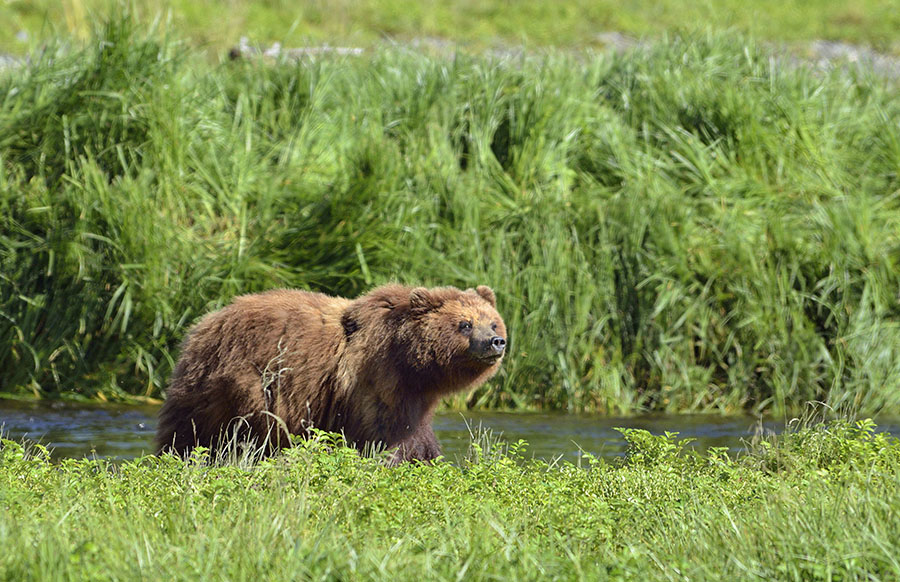
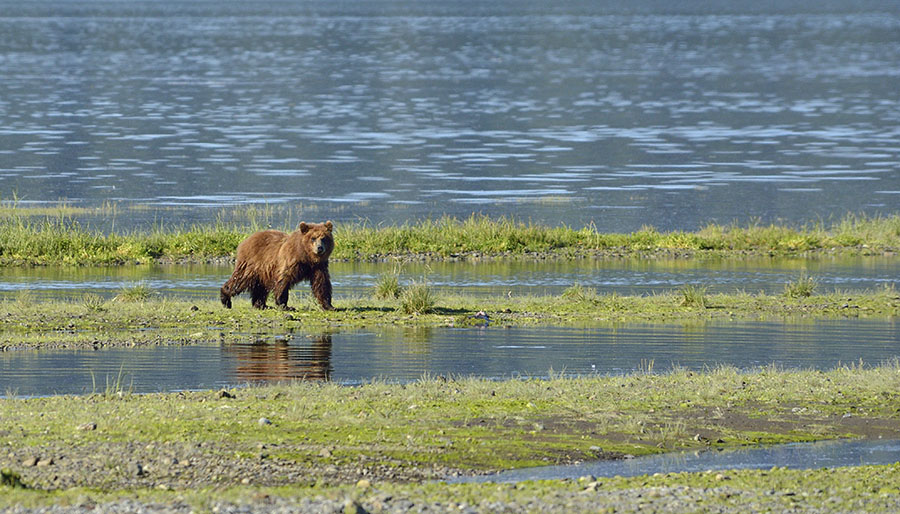

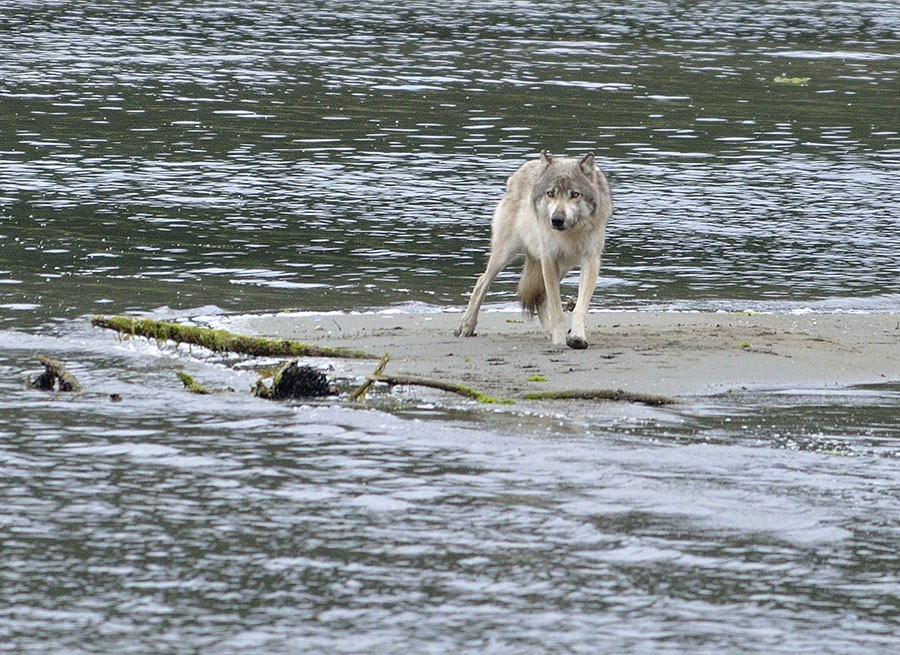 I’ve been looking for wolves every year that we’ve lived up here and I’ve only seen one, once, for just a few moments. Supposedly there are three packs that live on Mitkof Island (where Petersburg is), but they are rarely spotted. This wolf was tan colored, blending in with the beach. He chased a river otter without success.
I’ve been looking for wolves every year that we’ve lived up here and I’ve only seen one, once, for just a few moments. Supposedly there are three packs that live on Mitkof Island (where Petersburg is), but they are rarely spotted. This wolf was tan colored, blending in with the beach. He chased a river otter without success.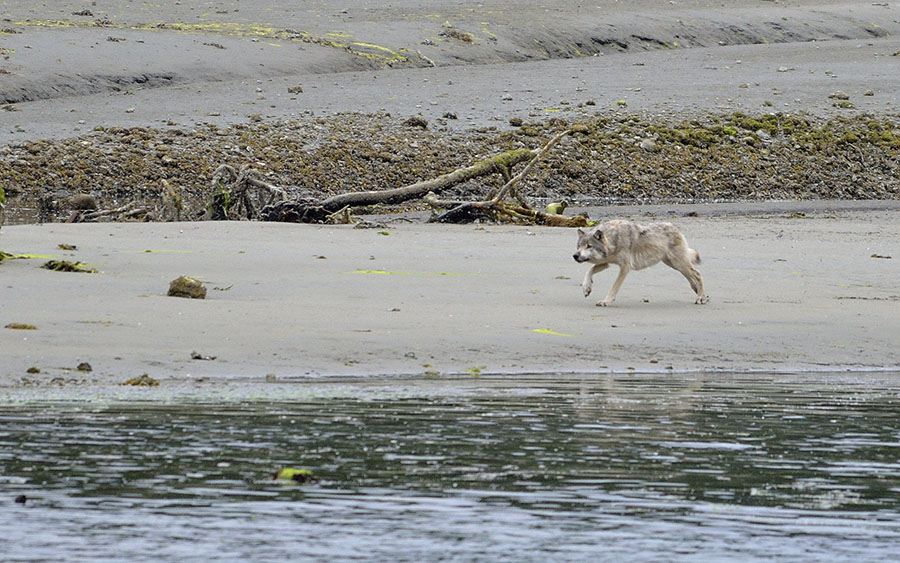 A nearby sea otter was also too quick for the wolf, and in frustration he eventually picked up something from underwater and ate it on the beach.
A nearby sea otter was also too quick for the wolf, and in frustration he eventually picked up something from underwater and ate it on the beach.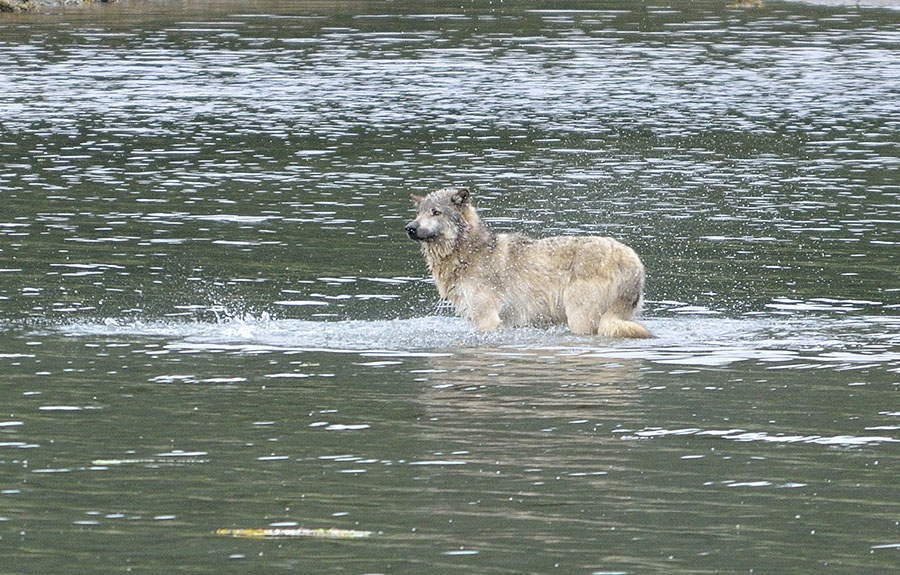 We got to watch him for about 15 minutes – a fantastic way to wrap up the day!
We got to watch him for about 15 minutes – a fantastic way to wrap up the day!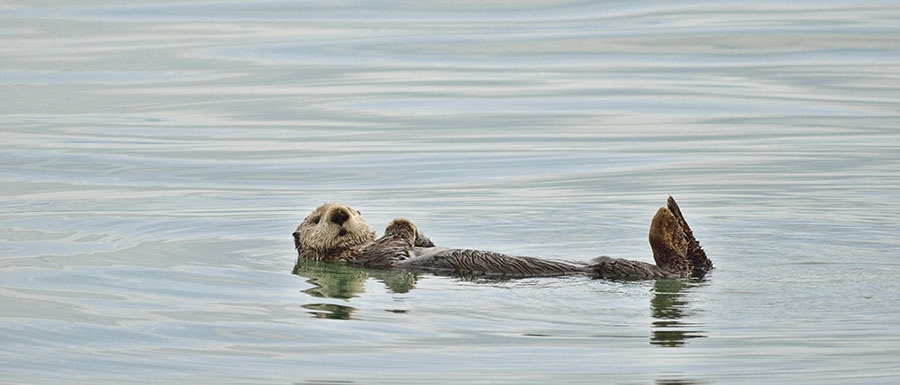 …and one was clutching a pup – a “mini me”.
…and one was clutching a pup – a “mini me”.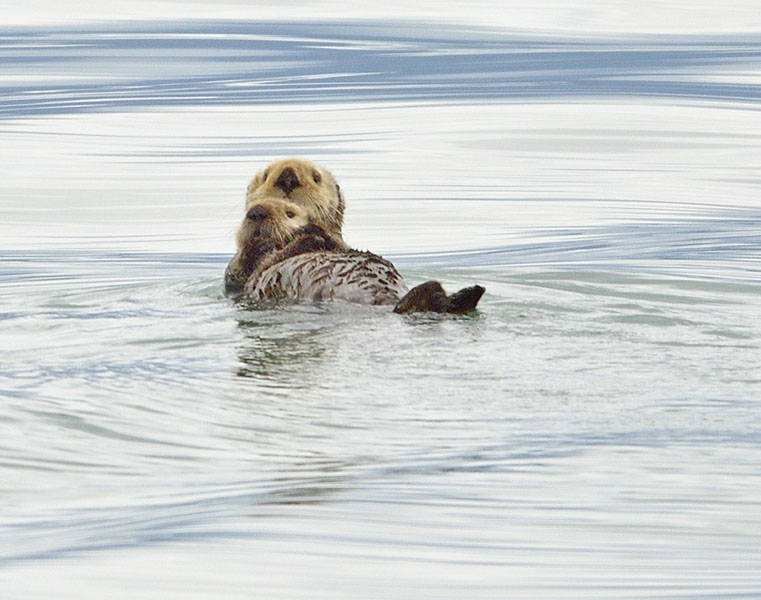 As we headed into Icy Strait we saw a humpback in the distance, but as we started towards it we spotted a small pod of orcas so we had to choose which kind of whale to watch.
As we headed into Icy Strait we saw a humpback in the distance, but as we started towards it we spotted a small pod of orcas so we had to choose which kind of whale to watch.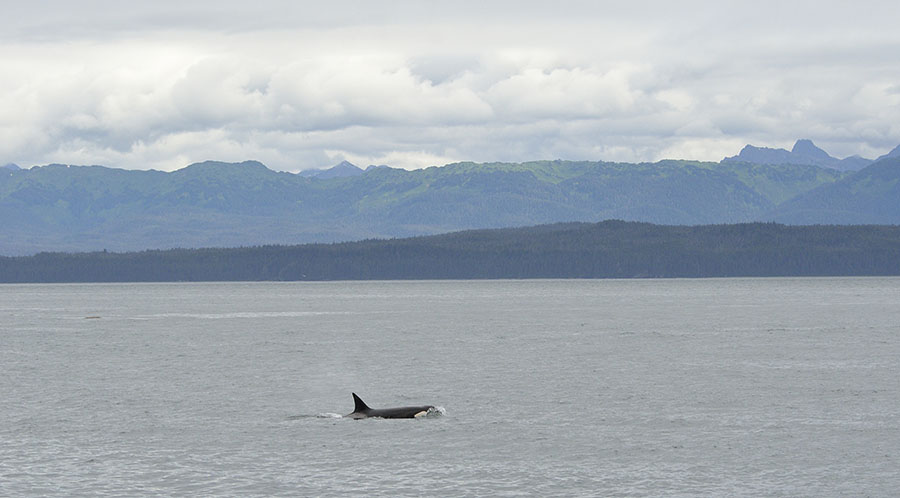 The orcas won out because there was a mother and calf among the group… another “mini me”.
The orcas won out because there was a mother and calf among the group… another “mini me”.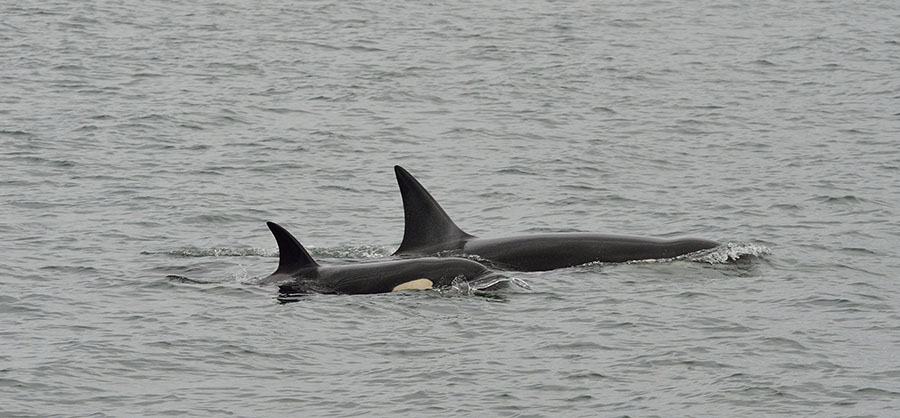 It was a pretty exciting way to wrap up our time in the bay, and we were glad to pull into Hoonah to chill out for a day or two.
It was a pretty exciting way to wrap up our time in the bay, and we were glad to pull into Hoonah to chill out for a day or two. These Tlingit people are very special – so generous with their time and talent, patiently sharing history and culture with everyone.
These Tlingit people are very special – so generous with their time and talent, patiently sharing history and culture with everyone.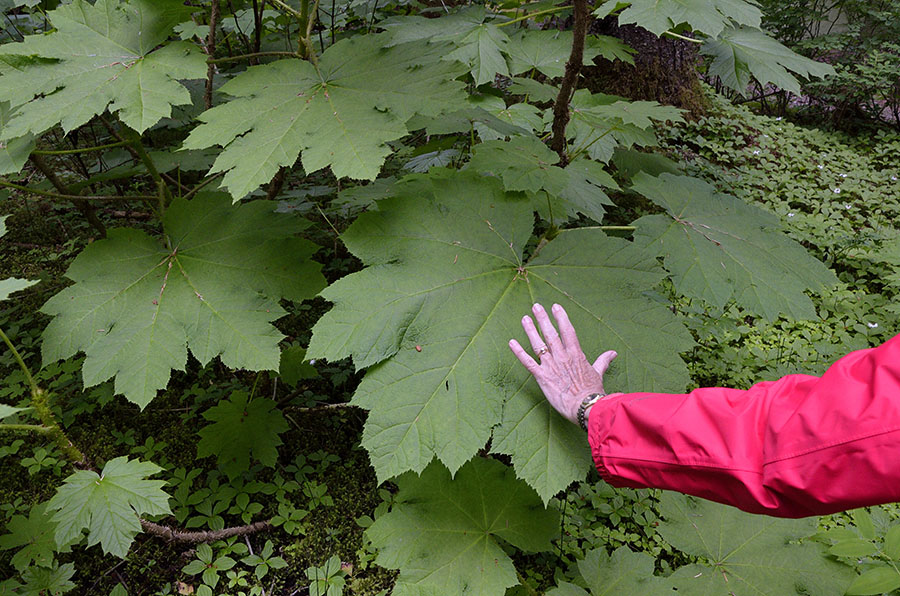 Devil’s club, a relative of the ginseng family, is an important plant for the Tlingit people who harvest the roots for tea and the stalks to make a salve that’s good for the skin. It’s challenging to harvest because it’s covered in tiny thorns – you don’t want to fall into it!
Devil’s club, a relative of the ginseng family, is an important plant for the Tlingit people who harvest the roots for tea and the stalks to make a salve that’s good for the skin. It’s challenging to harvest because it’s covered in tiny thorns – you don’t want to fall into it!